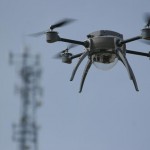Delivering vaccines to people in some parts of the world is a major challenge. Now drones – small unmanned aircraft – are being deployed to help solve the problem.

Vaccines can be sensitive to temperature which makes getting them to remote corners of developing countries particularly difficult. Storing them at the right temperature when they arrive can also be challenging.
Some regions are hard to reach because road infrastructure is poor and a steady supply of electricity to power fridges cannot be guaranteed. Fridges with solar panels have been developed but many clinics do not have the funding to purchase them.
Special delivery
The Gavi Alliance, a public-private partnership focused on immunisation in the poorest of developing countries, is teaming up with logistics specialists UPS and Zipline, a drone company, to explore a new option: drones.
The partners want to test vaccine delivery to clinics in Rwanda using small unmanned aircraft which can be controlled remotely. Zipline and UPS have already been piloting (no pun intended) a project that brings blood supplies for transfusion to Rwandan hospitals.
For Gavi, the project opens a new route to individuals in need of life-saving vaccines and, as it promises to be swift – potentially delivering vaccines on demand rather than in large batches that need to be stored – it could be a game-changer.
The companies involved hope their partnership with Gavi in Africa will help to prove the value of the technology, making it easy to roll out in Europe and the US where companies hope to use them for delivering parcels.
Supplying demand
Meanwhile, Gavi is supporting poor countries in developing the vaccine supply chain. One fifth of immunisation facilities that need to keep vaccines cold do not have the equipment to do so.
Funding for ‘cold chains’ – the supply chain that keeps vaccines at a stable recommended low temperature – can be unpredictable. In response, Gavi has launched the ‘Cold Chain Equipment Optimisation Platform’.
Up to 90,000 healthcare facilities will have their equipment upgraded while a further 45,000 will be equipped for the very first time. Technical support will also be provided to guide smart decision-making and maintenance.
Even small investments in cold chain equipment will save millions of dollars by preventing vaccine wastage, according to Gavi. Predictable funding will also be provided through joint investment to help countries to invest.
This in turn provides a market for medical and engineering firms that develop and supply equipment. That certainty also stimulates innovation.
Since 2000, GAVI has helped vaccinate 500 million children, preventing seven million deaths. All of the above initiatives contribute to Gavi’s goal of helping countries to vaccinate another 300 million children by 2020 – preventing millions more unnecessary deaths.




